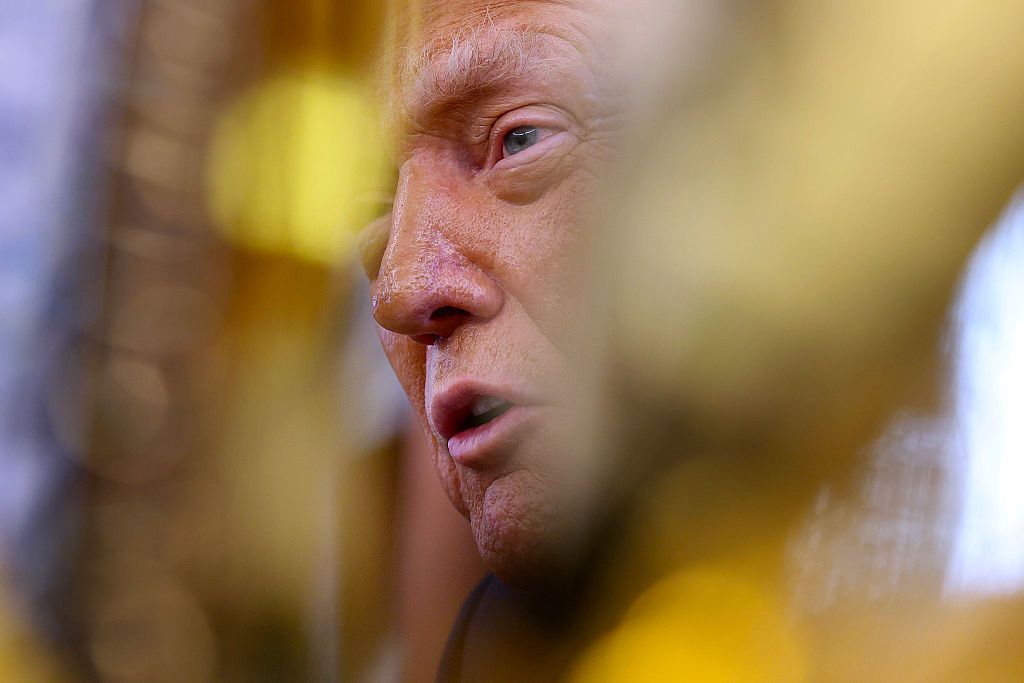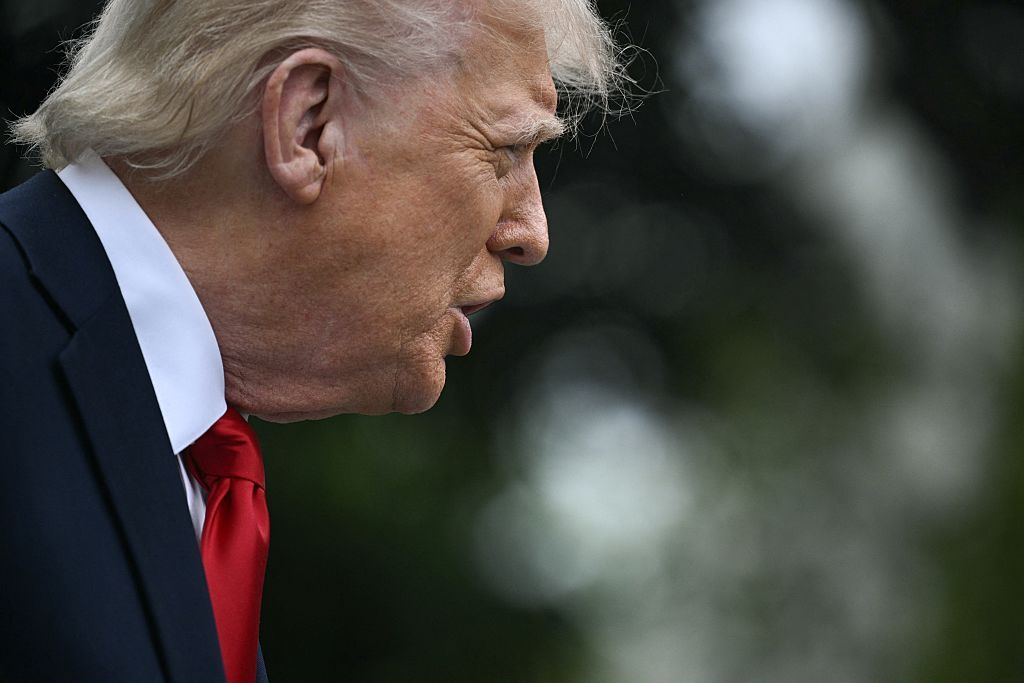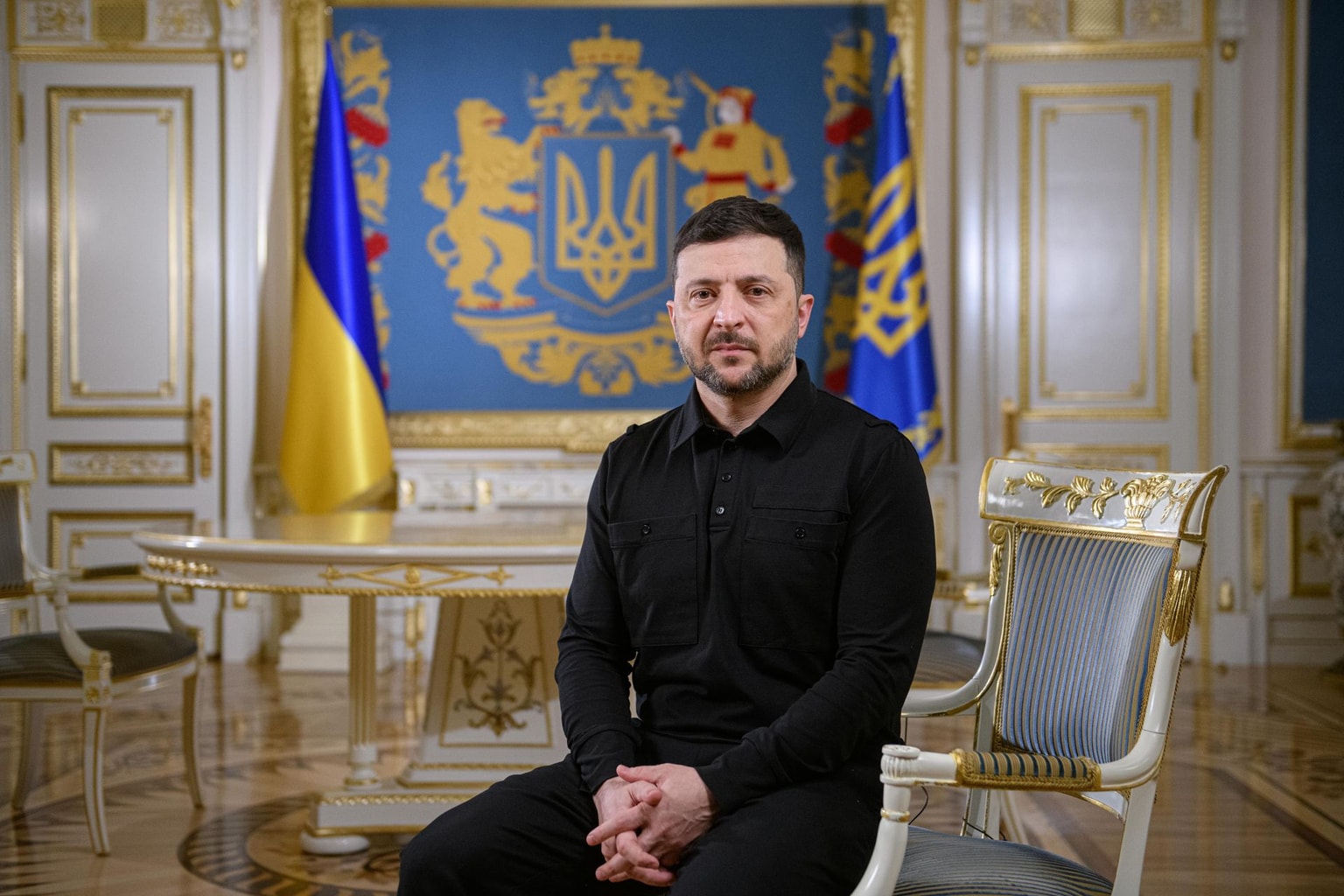
This Ukrainian mining company is losing hope in Trump's minerals deal
The open-pit mine Zavalivskiy Graphite in Zavallia, Kirovohrad Oblast on Feb. 18, 2025. (Dominic Culverwell/The Kyiv Independent)
Standing beside a sleepy village in Ukraine’s central Kirovohrad Oblast, the Zavalivskiy mine lies beneath layers of brown and pink earth, holding some 7.5 million metric tons of graphite ore — the second largest flake graphite mine in Europe.
Like many mining companies in Ukraine, Zavalivskiy Graphite has lost nearly a third of its workforce over the last three years of Russia’s invasion. Its production plummeted from around 15,000 metric tons pre-war to 860 metric tons last year.
Back in 2018, it was the eighth-largest graphite producer globally. The start of Russia’s invasion in 2022 forced the company to pause operations for a year. Since then, it’s lost its spot in the market and half of its customers in the EU, with only Italy, Czechia, and Austria left, as well as Japan.
The prosperity of the company may not only be decided in this small mining village, but in Washington, where a deal will be signed this week for Ukraine’s natural resources. The agreement has not yet been finalized as lawyers iron out the legal and technical details, but it is expected to include a fund that extracts profits from Ukraine’s natural resources, like critical minerals.
As the lifeline of the village of Zavallia where the mine is located, Zavalivskiy Graphite’s decline and potential closing would have serious implications for the local economy. The fate of the mine’s graphite specialists would also be uncertain as there is no other active graphite producer in Ukraine.
The CEO, Ostap Kostyuk, had hoped Washington’s natural resource deal could be its saving grace.
“I think it would be really positive if the U.S. came to the Ukrainian mining market. They should spend money and time to build something, to mine something,” Kostyuk told the Kyiv Independent in February, emphasizing the critical need for investments in the underfunded sector.


Graphite is used in military tech, metallurgy, and the nuclear industry, and is one of the critical minerals covered by Washington’s resources deal. While Zavalivskiy is the only active producer in the country, Ukraine has around 19 million tons of proven graphite ore reserves across six fields, making it one of the most graphite-rich countries in the world.
It’s taken Kyiv and Washington nearly three months to come to a deal. The tense negotiations have tested not only Ukraine and the U.S.’s relationship but also Kostyuk’s initial optimism for a win-win agreement.
He anxiously watched the heated Oval Office clash between President Volodymyr Zelensky and President Donald Trump on Feb. 28 that derailed the last attempt to sign an agreement. Now, he is wary that the American president will push Ukraine into an unfavourable agreement, particularly after his diatribes against Zelensky and talks with Russian President Vladimir Putin.
“When Trump's administration talks about direct negotiations with Russia without including Ukrainians, it means that maybe this national resources deal will not be a win-win. Maybe this deal will be a win-lose,” he told the Kyiv Independent on April 15.
Investment aspirations
The mine’s director, Ihor Semko, had initially hoped the deal with the U.S. would breathe new life into the village and its mine. Across Ukraine, he sees the potential of American money in creating new job opportunities and much-needed tax boosts to bolster Ukraine’s state budget.
On a drive along the mine’s winding, bumpy road, Semko points out the 42-meter deep lake in the middle. With more investments, the company can pump out the water and access the valuable minerals submerged beneath, he said.
“We have the experience, we have the equipment. We only need money for modernization, for further development. We only need investments,” he stressed.
Zavalivskiy Graphite is 70% owned by Australian company Volt Resources Limited and 30% by a Ukrainian investor — Kostyuk’s father. Graphite is excavated from the mine and then processed into powder in the adjacent factory. Despite its potential, the company hasn’t seen investments in recent years, largely because war risks have spooked shareholders.
This is a big problem for the company’s productivity. Much of the bulky machinery in the 90-year-old mine is from the Soviet era, and the musty factory’s rusty pipes and missing windows haven’t been modernized since 1964.
The old, energy-inefficient machinery is burdening the company as electricity costs skyrocket due to Russian attacks on the energy grid. Electricity fees now make up 40% of the company’s costs, an issue that is widespread across the mining sector, according to the National Association of Extractive Industry of Ukraine (NAEIU).

Despite the mineral-rich land, Ukraine’s mining sector is underdeveloped. After the fall of the Soviet Union, state companies and oligarchs took over licenses for the deposits but didn’t invest in innovation, instead opting to keep the sites as cash cows, said Nataliia Shapoval, chairwoman of the Kyiv School of Economics Institute (KSE).
“There is a lack of research and innovation in general. You can make really sophisticated products out of the materials, like lithium-ion batteries, and it's a better way of monetizing it if you are investing rather than just selling it as a raw material,” she told the Kyiv Independent.
In Zavalivskiy Graphite’s case, innovation could involve high-tech equipment to purify graphite to a level suitable for use in batteries, called spherical graphite (SPG), which sells for $3,500- $10,000 per metric ton.
Machinery for SPG purification costs $30-40 million, which the currently unprofitable company can’t afford. Kostyuk is hopeful the Americans could bring in this technology and cooperate with Zavalivskiy to produce the highly purified graphite and break into a market dominated by China.

Americans are inclined to invest more in mining projects than Europeans because of their vast military-industrial complex that is dependent on natural minerals, Kseniia Orynchak, executive director of NAEIU, told the Kyiv Independent.
There are 18 companies mining critical minerals in Ukraine, with the top player, BGV Group Management, inking cooperation agreements with three U.S. partners in February. American investors could similarly invest directly in other Ukrainian enterprises, Orynchak said. Or they could build assets in Ukraine, which will take around eight years to get going, and work with companies like Zavalivskiy Graphite to establish supply chains in the meantime.
“We want our economy to grow, and we understand that our geological sphere is our chance to survive,” Orynchak said.
Ukraine's uncertain future
Trump’s team remains unyielding that the resources deal is a step towards peace, but has so far failed to bring about much progress in peace talks despite attempts to broker a 30-day ceasefire on March 24. Bellicose rhetoric from the White House and Washington’s sudden backtracking on Feb. 28 after the Oval Office argument didn’t sit well with Kostyuk.
“Trump's politics means that he could cancel everything in one day, and sign something with Russia the next day,” he said.
Since entering the White House, Trump has spoken openly about resuming business in Russia and even floated the idea of a critical minerals partnership with Moscow.
The last draft that was leaked on March 28 also rubbed Kostyuk the wrong way. He couldn’t believe Washington would include a stipulation that could ban Ukraine from selling its natural minerals to countries deemed competitors of the U.S., such as the EU.
The clause would jeopardize Ukraine’s EU membership and undermine a resources agreement signed with Brussels in 2021. It also raises legal questions for companies partially owned by foreign investors, like Zavalivskiy Graphite, about whether Washington could dictate trade rules to other countries.
“Will the Americans say to Australians that they can't sell Ukrainian graphite to Europe? It sounds crazy,” said Kostyuk.

The best deal would encourage American companies to invest in Ukrainian enterprises, Kostyuk said. Foreign investors could also go through the usual procedure of purchasing mining licenses, which would help inject money into the state budget. Kyiv could even audit all the deposits and pool together those that are not being used efficiently as an offer to the Americans, he added.
Back in February, Kostyuk feared that the U.S. wouldn’t actively invest in the sector but rather extract the resources and sell them to other countries. The last leaked draft validated his concerns — Washington would not have to make a single investment, but Ukraine would have to allocate 50% of its profits from natural resource and infrastructure projects into a fund as a payback to the U.S. for its $128 billion in total aid provided to Kyiv since the start of the full-scale invasion.
Trump first wanted Kyiv to pay back $300 billion before Ukraine earned any profits, confusing Ukrainians who were unsure how he calculated such a high figure. Kyiv managed to negotiate him down to $100 billion on April 16.
Russia should be the one paying, Kostyuk said, but he’s losing hope that Washington will put pressure on Moscow to compensate Ukraine. The minerals deal saga has left him feeling that Ukraine is on the verge of being “scammed” and will end up on its own, indebted to its allies.
“We should recover ourselves. If this help is a debt, my kids and grandkids will pay this debt. So what can we do? We can't do anything,” he added.
Note from the author:
This is Dominic, the reporter who brought you this story. Thank you for reading. The saga over the resources deal has been convoluted and unpredictable, so I wanted to tell it from the perspective of people who will be impacted by it. We will keep you updated with the deal and developments in the future. To help us bring you more reports like this, please consider joining the Kyiv Independent community. Thank you.













